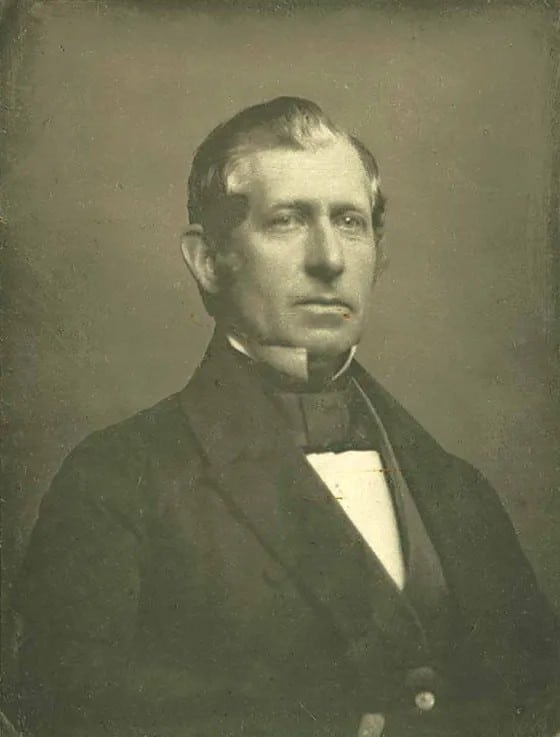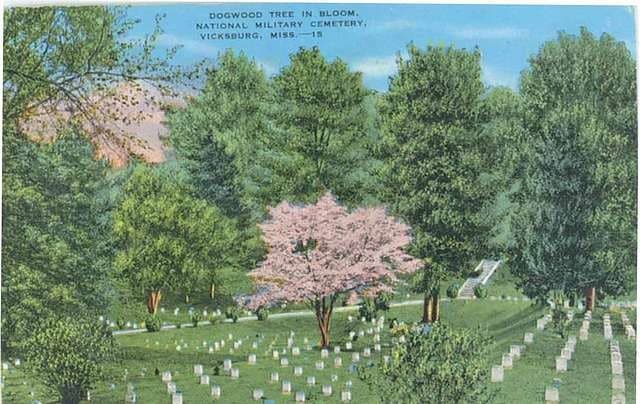Under The Dogwood Tree
ECW welcomes back guest author Lisa G. Samia.
The poem Under the Dogwood Tree is about two friends and soldiers who fought together during the battle of the Wilderness, Virginia, in May 1864. In this instance, neither side, North nor South, is identified.
This poem was inspired by Drew Gilpin Faust’s book This Republic of Suffering[1] and the accompanying PBS documentary Death and the Civil War.[2] We know there were instances where a soldier would write to a fallen soldier’s family and try to describe or identify where they lay buried. Perhaps they would try to carve their name on a rough piece of board and, in this instance, place a small map with directions as to how and where to find them.
The following passage in Faust’s book provided particular inspiration:
“In October 1865, sobered by the difficulties already encountered in the attempt to compile reliable lists of the dead, Quartermaster General Montgomery Megs issued another general order, calling upon officers to provide a survey of cemeteries containing Union soldiers. After interruptions necessitated by summer heat, Moore in the East and Earnshaw in the West resumed their efforts under these new guidelines, and on December 26, Edmund B. Whitman, chief quartermaster of the Military Division of the Tennessee was relieved of his regular duties and assigned responsibility ‘to locate the scattered graves of Union soldiers’ across a wide area of Kentucky, Tennessee, Georgia, Mississippi and Alabama.”[3]

“Whitman had served in the Quartermaster Corps during the war, enlisting from his home in Kansas soon after the opening of hostilities. Now, a decade later, he embarked on an expedition to locate and honor those who had perished in the cause for which he had fought so long. Whitman composed a circular entitled ‘Important Information Wanted,’ addressed to ‘Surgeons, chaplains, Agents of Sanitary and Christian commissions, Quartermasters, Officers or soldiers,’ and forwarded it to three hundred newspapers and periodicals for publication. The circular provoked an outpouring of responses. Relatives begged Whitman to find the remains of lost kin; other correspondents furnished drawings and descriptions indicating the exact spot where a friend or comrade had been buried. A letter from A.T. Blackmun, for example, explained that his brother had been buried in a cemetery five miles east of Vicksburg, in an orchard near the railroad. ‘The grave is under & to the South side of the fourth apple tree, in the third row of trees, continuing from the side nearest Vicksburg.’”[4]
The specific segment identified from the documentary Death and the Civil War contains a haunting passage of A.T. Blackmun’s description of where his brother was buried, including an actual hand-drawn map created to aid in locating his brother’s remains.
Combining everything, it leaves us to wonder how many of these soldiers were actually found and wonder still further if the soldier in the poem ever was.

Under the Dogwood Tree
I take my pencil to tell you now, of how your son died that day
Upon the battlefield of the Wilderness, please read on as I say
It was the time of day called twilight of this I do believe
That we marched and I saw him fall so how I do now grieve
I dropped my musket amidst the shot and fire
And knelt beside him I knew then it was so dire
But I was ordered double quick to my feet and hurried on my way
Yet I knew I would come back to find him, somewhere in the fray
Later I asked to search for him in between the lines of dread
But I was denied and had to wait and watched as the river ran red
Then next I was ordered into the field where our soldiers lay without breath
As the grim reaper gathered his harvest, in anticipation of so much death
And as I began to dig to bury your son, I knew I had to do more
I snipped a locket of his bright blond hair and send to you to adore
Also, you will find a map of where I laid him to rest
I drew it as best I could, to guide you in your quest
And as the pink petals of the dogwood tree rained down upon my face
That I could not leave him there without a name, without a face
I pray then you will find your soldier son of this I do decree
Look for him there, if you can, under the dogwood tree
Lisa G. Samia is an award-winning poet and author. She was selected as the National Parks Artist in Residence for Stones River, Murfreesboro, Tennessee, in 2025, and the National Parks Service Artist in Residence for Manassas National Battlefield Park in 2021, and the National Park Service Artist in Residence for Gettysburg National Battlefield Park in 2020, all for poetry.
Endnotes:
[1] Drew Gilpin Faust, This Republic of Suffering: Death and the American Civil War (Alfred A Knopf New York 2008).
[2] PBS Documentary Death and the Civil War, Producers WGBH and Steeplechase Films, Director Ric Burns 2012.
[3] Faust, This Republic of Suffering, 219.
[4] Faust, This Republic of Suffering, 219-220.
Lisa is a wonderful poet who can easily capture the essence of thoughts and feelings and communicate them to her audience. Her depth of emotion is always within her words.
What a powerful fusion of historical research and poetic artistry. The poem beautifully illustrates the human need to preserve identity and dignity even in death.
For centuries, the fallen common soldier was simply buried in a common grave, burned, or simply left where he fell. Starting with the US and the Civil War, the graves of the average soldier grew in importance. I think that was a natural development of a democratic sort of military, where the common soldier was more appreciated and valued.
Tom
This poem absolutely took my breath away. The way you’ve captured the desperation of a soldier trying to honor his fallen comrade is deeply moving.
The small acts of humanity that you have added amid such chaos remind us why these stories matter, and makes this poem hit differently.
Lisa, this poem, like all of yours, really stir up emotion. I really appreciate your dedication to writing about the fallen, and also so many of the events (for lack of a better word) that happened during this war. I admire your talent and dedication.
Tina D